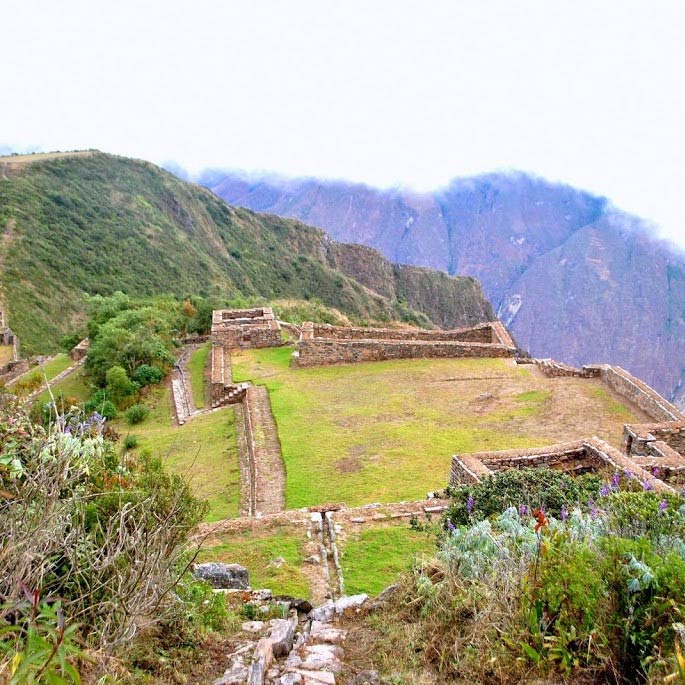Best Archeological Sites in Peru
By Ela Bader
The mysterious Peruvian land was once a home for many ancient civilizations which left traces in the form of cities, temples, labyrinths, bridges and perplexing statues. Nowadays, they are admired for the complex and magnificent architecture. Here is a list of the most interesting archaeological sites in Peru (from my experience of backpacking through a large part of this country).
Choquequirao
Situated at an elevation of 3000 meters in the Andean mountains and surrounded by mighty rivers, this ruin complex is comparable to Machu Picchu in terms of immense size and sophisticated architecture. Nonetheless, it is far less visited. An intense two day hike through steep mountains is the only way to get to this impressive site and only few people a day make it there. If you’re lucky you may even have the site just for yourself (contrary to Machu Picchu where you have to share it with roughly 2000 other visitors). The hike there is a lifetime adventure but be prepared for difficulties. The trails are zigzagging sharply up and down and there is no flat surface. It was the most difficult hike I’ve done so far but how rewarding! The majestic Andes surround you at every step and the mighty river is flowing between the mountains providing epic views during the whole hike.
|
|
 |
Chavín de Huántar
This ruin complex was once a pilgrimage site for the individuals from Chavin civilization. Constructed between 1500 and 300 BC it consists of a massive temple, plaza and the labyrinth. It was a ceremonial center which offered a spiritual and psychedelic experience. Participants were given hallucinogenic San Pedro cactus, then entered the complicated underground labyrinth accompanied by sounds of trumpets and water running below their feet (the site hosted a complex canal system). All that to confuse a person walking in the labyrinth and enhance the spiritual experience. To get the atmosphere even more, try a two days hike in Cordilliera Blanca just as ancient Chavin pilgrims did some 3000 years ago. Locals selling souvenirs at the site sometimes offer tours of the site accompanied with San Pedro cactus consumption.
 |
 |
Nazca
Seen only from the plane or high hills, Nazca lines form various designs such as spider, birds, monkey, tree, possible astronaut. These lines were drawn by moving the black rocks and reveling the light color sand underneath. Due to the lack of rain the lines stayed intact for 2000 years. Multipule theories about why the lines came into existence range from contact with aliens to astronomical purpose, but the version I heard when visiting the site was that Nazca people created them for the gods, who could see them only from the sky. If you’re in the area don’t miss the Nazca cemetery with its creepy open graves… Many bones that lay aroung the graves were left behind by plundering thieves who robbed the bodies from gold and other valuables they were buried with.
 |
 |
Chan Chan
The largest Pre-Colombian city in South America, Chan Chan was created by Chimu civilization. The site contains various adobe constructions covered with intricate designs. The scale of the site is breathtaking, and the designs on the adobe walls are a reminiscence of a grand civilization that once inhabited those lands. Unlike other ruins in Peru, Chan Chan was constructed very close to the Pacific Ocean. The proximity of the water had influence on the daily activities of citizens of Chan Chan. Those are depicted in various carvings of fish, crabs, turtles, and fishing nets. Another characteristic that makes Chan Chan unique is that the site has many ramps and no stairs. To increase the farming Chimu civilization created the canal system. It improved the farming for some time but was later destroyed by flood. A small lake is remaining from those ancient times and it looks like an oasis surrounded by yellow sand of this desert. Unfortunately, a vast part of Cha Chan was destroyed by the centuries of rain and only small part of this once monumental city remains.
 |
 |
Moray
The alien looking Moray can be easily visited thanks to it’s proximity to Cuzco. Numerous levels of terraces are aligned in the valley creating a temperature difference of as much as 15 °C (27 °F) between the top and the bottom. Archaeologists suggest that Moray was an Inca agricultural experiment station. Each level has a different micro-climate, making it ideal for crop testing. According to our guide, Incas planted different species of potatoes, plantains and other vegetables on different levels. This was done to distinguish which species will do better in cold and hot temperatures. The ones that adopted the best were distributed to different parts of Inca empire to make the most out of their sophisticated agriculture.
Machu Picchu
This very popular tourist attraction was left to the end of the list on purpose. Amazing as it is, it attracts a big number of tourists, therefore it offers a completely different experience then the previously mentioned sites. Regardless of the crowds, it remains a marvelous monument of Inca’s architecture and their love for the highlands. It is situated on a mountain ridge which offers magnificent views as well as mystic fog invading the site at different times of the day. If you travel on a budget it’s worth to consider walking to Aguas Calientes (the closest town to Machu Picchu) instead of taking an expensive train. It’s a good idea to arrange the tickets a day in advance as the entrance to viewpoints Huayna Picchu and Montana Machu Picchu are limited.
The story of Machu Picchu is intriguing and is it’s purpose is still unknown. The popular version is that Machu Picchu was a holiday resort for elite Incas. The Incas started building it around 1430AD in this hidden location which prevented it from being destroyed by Spanish conquistadors during their invasion on the Inca Empire.
|
|
|






